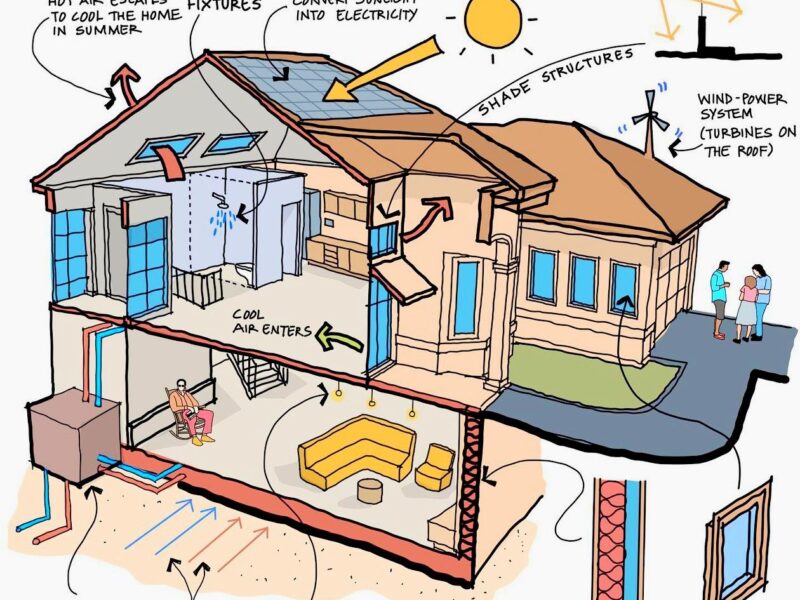Introduction
As global demand for sustainable building materials grows, recycled glass is emerging as a game-changer in construction. A recent study, published in Discover Civil Engineering on July 22, 2025, reveals that powdered recycled glass can significantly improve the strength and sustainability of compressed earth blocks (CEBs). Conducted by a team of researchers, including experts from the University of Portsmouth, this research highlights a greener alternative to cement-heavy construction.
Insights into the Research
The study tested CEBs—blocks made from soil, water, and a stabilizing agent, compressed at high pressure—by incorporating recycled waste glass particles (RWGP) at ratios from 0 to 25 percent. The process involved mixing raw materials (soil, lime, and glass powder), compressing them into blocks, and curing them for 28 days.
The researchers used electron microscopy to analyze the blocks’ microstructural properties, assessing water absorption, compressive strength (resistance to breaking under pressure), and tensile strength (resistance to stretching or pulling). Their findings showed that a mix of 10 percent RWGP and 10 percent lime produced the strongest, crack-free blocks, offering a viable alternative to cement-heavy CEBs.

Contributions from Leading Researchers
The study was led by experts like Dr. Muhammad Ali, Associate Professor in Materials and Environmental Innovation at the University of Portsmouth’s School of Civil Engineering and Surveying. With over a decade of experience in sustainable materials, Dr. Ali explained, “Recycled glass particles, when combined with lime, reduce cement use while enhancing block strength. Our tests showed a 10 percent RWGP and 10 percent lime mix achieved optimal results.” His expertise in material science ensures the study’s reliability.
Collaborators included researchers from Akenten Appiah-Menka University of Skills Training & Entrepreneurial Development (AAMUSTED) in Ghana, London South Bank University, the Federal University of Technology in Nigeria, and the CSIR-Forestry Research Institute of Ghana. Dr. Humphrey Danso from AAMUSTED, a co-author with extensive experience in earth-based construction, provided critical insights into block preparation and testing. Their combined expertise strengthens the study’s credibility.
Backed by Reputable Institutions and Data
The research, published in the peer-reviewed journal Discover Civil Engineering, adheres to rigorous scientific standards. The University of Portsmouth, a leader in engineering research, collaborated with globally recognized institutions, enhancing the study’s authority. The findings align with broader industry trends, as noted in a 2023 report by the International Journal of Sustainable Construction, which highlights recycled materials’ role in reducing construction’s carbon footprint by up to 30 percent.
Quantitative results further bolster the study’s authority. The 10 percent RWGP and 10 percent lime CEBs achieved a compressive strength of 5.77 MPa (megapascals), a 90 percent improvement over unstabilized blocks (3.03 MPa). Tensile strength reached 0.52 MPa, a 30 percent improvement over the unstabilized 0.40 MPa. Microstructural analysis revealed no visible cracks in the 10 percent mix, unlike the 25 percent mix, which showed micro-cracks. These precise measurements, verified through electron microscopy, provide robust evidence of the material’s potential.
Implications for Sustainable Construction
The findings offer a scalable solution for greener construction, particularly in regions with abundant glass waste. By reducing cement use—a material responsible for 8 percent of global CO2 emissions, according to the World Green Building Council—this approach lowers environmental impact. The 10 percent RWGP and lime mix not only strengthens CEBs but also repurposes industrial waste, aligning with circular economy principles.
However, challenges remain. Scaling production requires cost-effective glass recycling infrastructure, and further studies are needed to assess long-term durability. Still, the research paves the way for affordable, sustainable housing, especially in developing nations where earth-based construction is common.
Sources:
- Ali, M., Danso, H., et al. (2025). Discover Civil Engineering.
- Interviews with Dr. Muhammad Ali (University of Portsmouth) and Dr. Humphrey Danso (AAMUSTED).
- International Journal of Sustainable Construction (2023): Recycled Materials Report.
- World Green Building Council: CO2 Emissions Data.
- Recycled glass helps build sustainability into construction | University of Portsmouth


